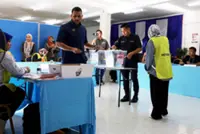The production crew travelled to various locations around Sabah and Kuala lumpur. Some locations were only accessible by four-wheel-drive vehicles.
About 26 months ago, a couple of friend and I conceived a “crazy idea” of making a documentary film about the realities, values and aspirations of Sabahans in embracing, celebrating and preserving cultural diversity in Sabah. Unexpectedly, this humble social project ended up taking us nearly two years to complete, including 10 months of shooting in 16 locations in Sabah and Kuala Lumpur and four months of post-production work involving hundreds of locals from diverse cultural backgrounds.
The result is a 1 hour 45 minutes Finas-funded documentary film called KITA – Sabah Celebrating Diversity, which consists of three separate but interrelated sections that follows the real life stories of 10 ordinary Sabahans through whose lenses the audiences will experience the strength, beauty and “deliciousness” of a diverse society.
Already a subscriber? Log in
Save 30% OFF The Star Digital Access
Cancel anytime. Ad-free. Unlimited access with perks.





